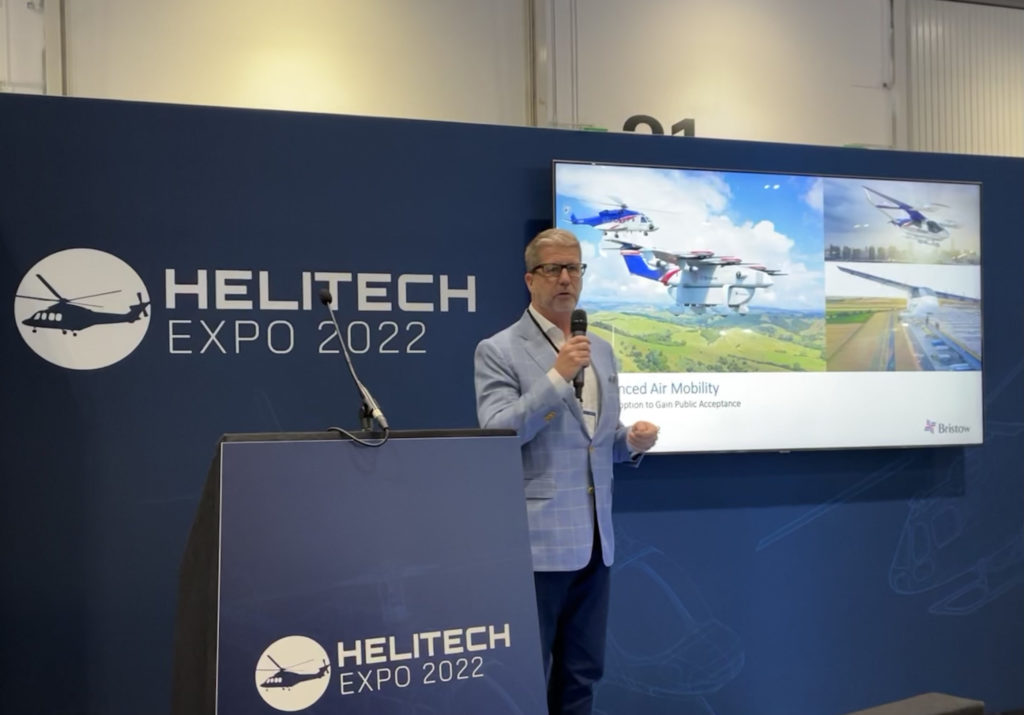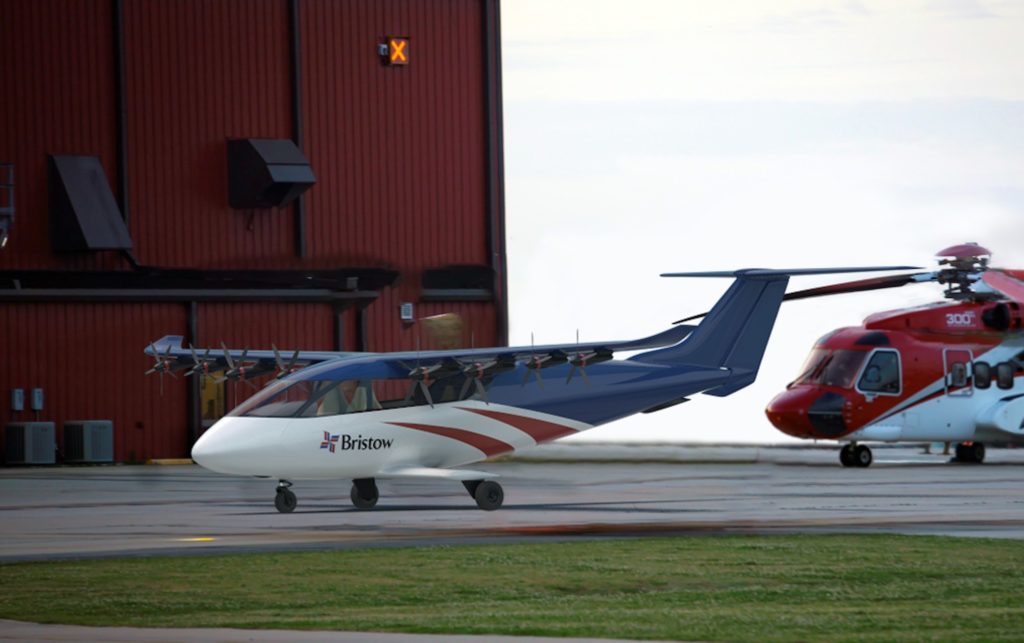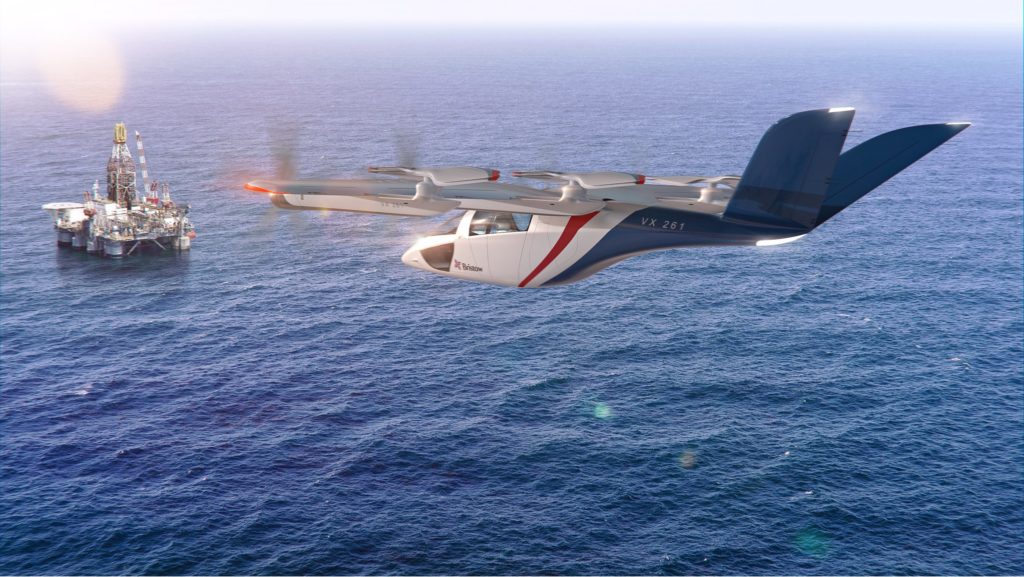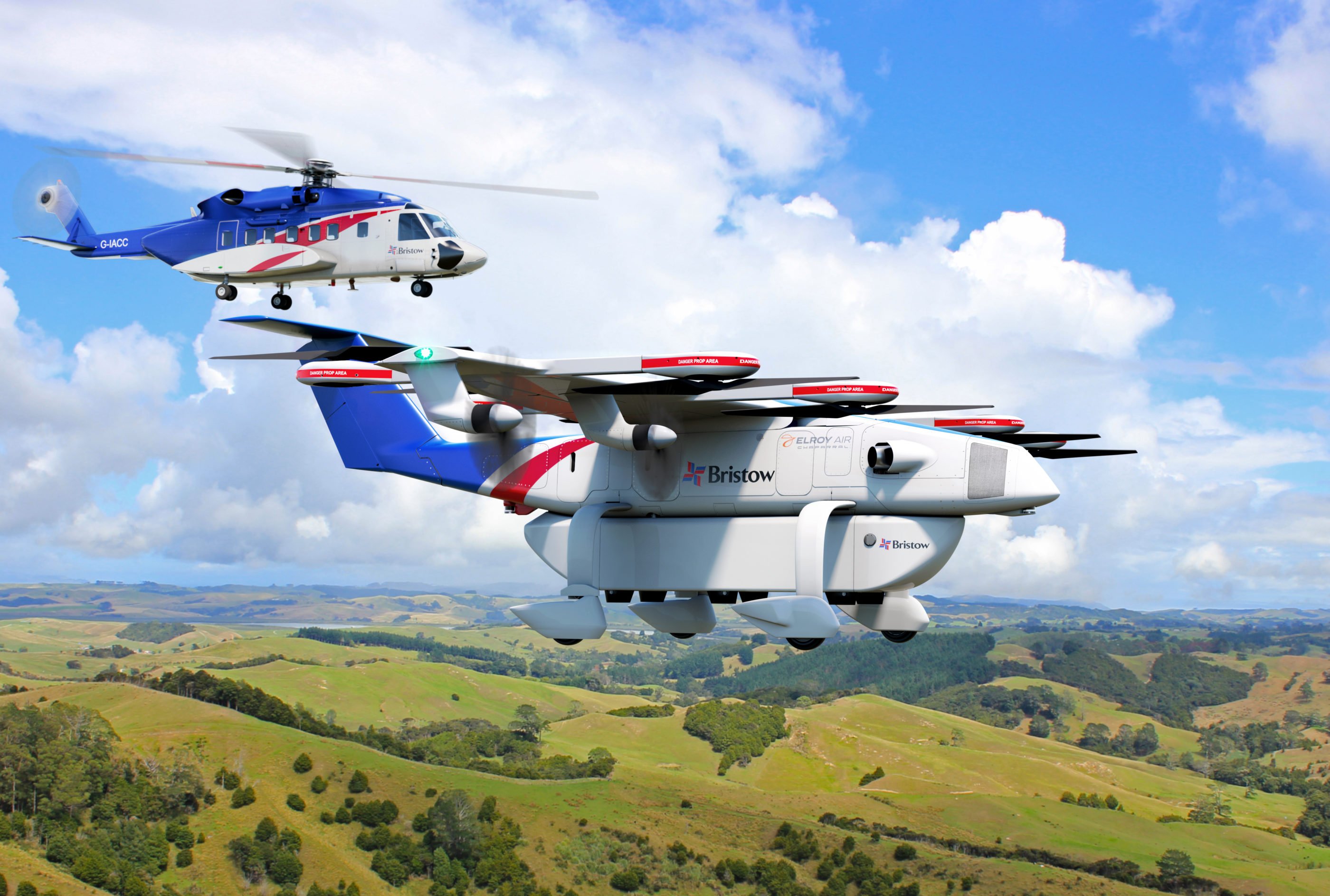Bristow plans to take a “pragmatic approach” in moving into electric vertical takeoff and landing (eVTOL) aircraft operations, as it outlined its ambition to become a leader in the emerging industry at the recent Helitech Expo in London.

The operator has made numerous headlines over the last year with its significant investment in resources in the eVTOL and electric short takeoff and landing (eSTOL) sectors, which the operator brackets under the term “advanced air mobility.” At last count, Bristow had signed memorandums of understanding (MOUs) or purchase agreements with six eVTOL developers and one eSTOL manufacturer, and is considering adding another to its stable.
“We think the future is advanced air mobility,” said David Stepanek, executive vice president of the Bristow Group, during a presentation of the operator’s move into the sector at Helitech. “It’s going to be a parallel path to helicopters, but it’s definitely the future — and we, as innovators in vertical flight, believe it deserves some resources.”
The operator, which has a vertical-lift heritage reaching back over 70 years, is renowned for its experience and expertise in moving workers to offshore oil-and-gas facilities around the world, as well as a growing business providing search-and-rescue services (the most high-profile of these contracts being the UKSAR agreement, and, in the last few months, its UKSAR2G successor).
“The offshore energy business has been where we have focused our last few decades because that’s where we get a good return on our capital,” said Stepanek. “So, we focused most of our missions on that and also the search-and-rescue business. But . . . we do a lot of utility work — we’ve done firefighting, we’ve done flightseeing, we’ve done cargo missions, [and] we’ve done long line missions.”

Bristow’s work spans 15 countries, and its operational fleet includes 222 aircraft — largely comprised of Sikorsky S-92s and Leonardo AW139s, but also including Leonardo AW189s, AW109s and AW119s; Sikorsky S-76s; Airbus EC135s and AS350s; 14 fixed-wing aircraft and four UAVs.
“We operate a wide variety of fleet of aircraft because we believe that you need a large [number of] different types of aircraft to work collaboratively in a network and/or for different missions around the globe.”
This same approach — a wide variety of fleet options to suit different roles — is being applied to Bristow’s move into AAM, said Stepanek. This is why it has invested in eVTOL and eSTOLs with different propulsion systems, different ranges, and different passenger capacities.
The company has also invested in a geographically diverse range of developers, on the assumption that civil certifications may not easily be shared between regulators.
“You may not see European-designed aircraft in North America, and vice-versa,” said Stepanek. “But we operate in both jurisdictions, and we have different mission profiles for Europe than we do in North America or Brazil. We believe all these aircraft will make it, and I also believe that some of this technology will transfer and perhaps there will be consolidation in this industry.”
Building a fleet
The operator’s move into the eVTOL sector began in August last year, with the signing of an MOU with Electra.aero that sees the two cooperate on technical development, certification, marketing and future operations of Electra’s hybrid-electric short takeoff and landing aircraft.
The eSTOL is designed to operate from runways as small as 300 by 100 feet using a blown lift technology. It can transport up to 1,800 pounds (815 kilograms) of cargo, or carry five to seven passengers up to 500 miles. In announcing the agreement, Electra said it expects to deliver “50 or more” of the type to Bristow.
Then in September, Bristow signed an MOU with British company Vertical Aerospace Group. Under the MOU, the companies are cooperating on the certification and operational planning for Vertical’s VA-X4 eVTOL, which can carry four passengers and one pilot up to 100 miles (160 kilometers) at a top speed of up to 200 mph (320 km/h).
Bristow also signed a pre-order for 25 VA-X4s, with an option for a further 25.

Just two days later, the operator announced an MOU with Embraer subsidiary Eve Urban Air Mobility to develop an Air Operator’s Certificate (AOC) for Eve’s eVTOL aircraft. Bristow also placed an order for up to 100 of the type, with deliveries expected to begin in 2026.
In December, Bristow signed an MOU with Overair to collaborate on the development of the commercialization of the Butterfly eVTOL, with the operator also pre-ordering 20 to 50 of the type. The Butterfly can carry five passengers with cargo up to 100 miles, with a top speed of 200 mph.
The MOU sees the companies collaborating on an operations development framework, including vehicle design consideration, key performance parameters, type certification, configuration and maintenance protocols, infrastructure, and ground support operations.
Bristow then signed a letter of intent (LoI) with Elroy Air for 100 Chaparral hybrid-electric cargo VTOL aircraft in July. Designed to carry 300 to 500 lb. (135 to 225 kg) of cargo in an underslung pod over a 300-mile (480-kilometer) range, the Chaparral can be autonomously picked up and dropped off in a 50-foot landing square. It can also be remotely piloted. Announcing the LOI, Bristow said it would use the aircraft to serve logistics, healthcare and energy applications.

Later that month, at the Farnborough International Airshow, Bristow announced a “strategic partnership” with Lilium, where Bristow has the option to purchase 50 Lilium Jets in addition to providing maintenance services for the type’s launch network in Florida and other future U.S. and European markets.
Most recently, in August, it announced a firm order for five BETA Technologies ALIA-250 eVTOL aircraft, with an option for a further 50. The ALIA will have a maximum range of 250 nautical miles and is designed to carry 1,400 lb. (635 kg) of payload, or six people (including a pilot).
Building an industry
Stepanek says the company will own and operate the aircraft, both as a regional carrier and for business-to-business purposes. It will also offer its operational services for third parties — airlines or business that require passenger or cargo transport — as well as provide maintenance, repair and overhaul (MRO) and training for the types.
“Those are our core businesses,” said Stepanek. “We’re going to apply that with our strong balance sheet and our bandwidth to really be a leader in this industry of operating these aircraft. And that’s why we think experience matters — it certainly matters to ourselves — and then through the process to get the public’s acceptance.”
He said it was important that eVTOL and eSTOL technology is brought into operation in “a very pragmatic way.”

Stepanek reflected on the first “revolution” of aviation — the first powered flights — which saw commercial aviation develop gradually, with aircraft used to move the mail, for example, or small cargo, or for observation flights. Only when the technology’s reliability was proven and systems were established did passenger transportation eventually follow. A similar approach, he said, should be taken with AAM.
“We believe that this revolutionary technology has to be put in the hands of somebody that can take the evolution of how they move people and stuff through it,” he said. “It’s very important that we remember that and then we do that in an albeit faster [pace than in the first aviation revolution], but in an evolutionary pace.”
Bristow believes the initial missions AAM missions will be in a constrained environment with uncrewed cargo aircraft — like the Elroy Chaparral. This could be as early as next year, with the technology used in remote locations, such as offshore.
“We’re going to move through the process of proving out the technology to ourselves,” said Stepanek. “Just because it’s certified, we as an operator need to know that we can operate it safely, efficiently and reliably in our commercial systems.”

Crewed cargo missions will likely follow, and then, ultimately, regional passenger transport.
“I think it’s going to be a business-to-business model [of passenger transport], instead of business to consumer first,” said Stepanek.
For its own purposes, this could mean changing the way offshore workers get from their homes to the worksite. In the near term, this wouldn’t involve flying eVTOLs offshore — but they could be used to move people from towns and villages to the hub that can take them offshore in a helicopter.
“We’ll start to get the regulatory bodies to be comfortable with these electric propulsion systems and the reliability systems and the maintenance requirements that are necessary,” said Stepanek. “And once we get that, and we can demonstrate that to the public, I think we can get into the more passenger transport and urban processes.”
This latter phase is likely to be around 2030/35, he added. While some specific locations around the world — Singapore, for example — may see urban air mobility before then, Stepanek said his timeline would be more likely on the global scale.
While he said distributed electric propulsion systems are “clearly changing the DNA” of aircraft, he emphasized the operational similarities to helicopters — taking off vertically and flying horizontally.

“We’re not changing the way we fly; we’re just dealing with a different propulsion system,” he said.
Pure battery propulsion will grant access to new markets, said Stepanek, thanks to their reduced carbon footprint and lower noise signature. And the more simple propulsion systems — as compared to those of a helicopter — will result in lower cost, he said.
“These aircraft are $3 million or $4 million, and it costs less than $1,000 an hour all-in to operate [them],” he said. “So you don’t buy one and fly it back and forth, you buy 20 and you set up a little process where you take off every 15 minutes and you fundamentally have just a circle. You can replicate that in any major metropolitan area in the world. And you can do it today with the infrastructure that’s in place.”
Bristow’s AAM fleet will be crewed — with the exception of the Elroy Chaparral cargo aircraft. Not only is this important for public acceptance, but the industry needs to be able to attract new people to work in it. “We believe in crewed,” said Stepanek. “It’s important in aviation that we have job creation. We want to get young people to be interested in this, but they also have to see a career path.”
Bristow will also organize an AAM trade group for operators — in a similar vein to the HeliOffshore group that exists for offshore operators. The group, said Stepanek, would set a high bar in terms of standards, establishing the quality of its members to the public.
“We want [AAM] to be successful,” he explained. “There’s going to be a lot of operations and a lot of companies operating in it, but if we get it wrong early, we won’t get a chance down the line.”









